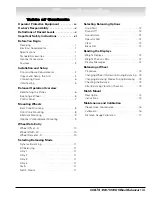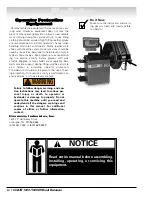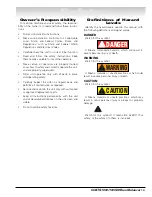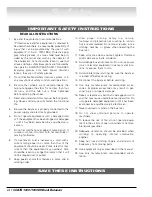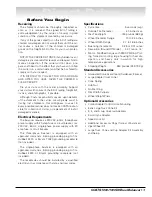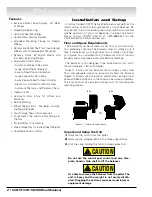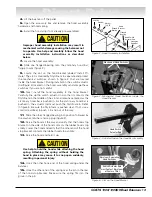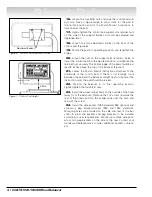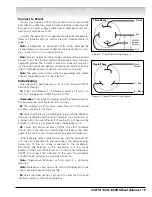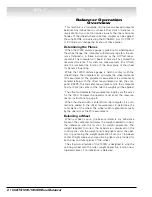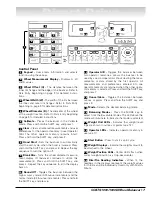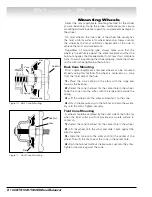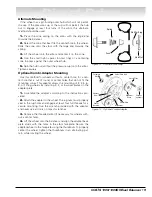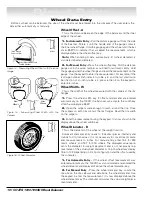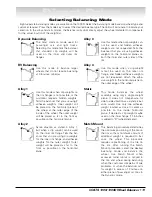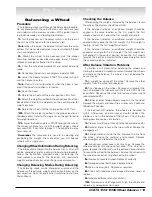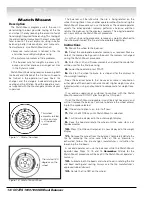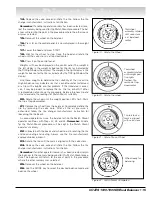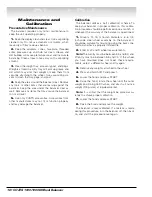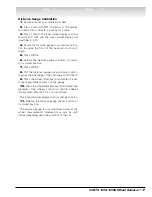
COATS 1000/1000D Wheel Balancer • 11
Dynamic Balancing
The most common mode used for
passenger cars and light trucks.
Selecting this mode tells the balancer
that standard clip weights will be
used on the inner and outer rim
flanges.
RV Balancing
Use this mode to balance larger
wheels that do not require balancing
at 0.5 ounce or below.
Alloy 1
Use this mode when clip weights on
the rim flanges is not possible, or the
customer requests hidden weights.
Tells the balancer that you are using 2
adhesive weights. Inner weight will
be placed on the horizontal plane of
the wheel at the outer edge of the
inside of the wheel. The outer weight
will be placed as far to the front as
possible on the horizontal plane.
Alloy 2
Same situation as stated in Alloy 1,
but when a clip weight can be used
on the inner rim flange. Tells the bal-
ancer that you are using clip weights
for the inner rim flange, and adhesive
weights for the outer weight. Outer
weight will be placed as far to the
front as possible on the horizontal
plane.
Alloy 3
Use this mode when clip weights can-
not be used, and hidden adhesive
weights are not requested. Tells the
balancer that you are using adhesive
weights on the horizontal planes on
both the inner and outer sides of the
rim.
Alloy 4
Use this mode when a clip weight
cannot be used on the outer rim
flange, and hidden adhesive weights
are not requested. Attach the adhe-
sive weight to the horizontal plane on
the outer edge of the wheel.
Static
This mode balances the wheel
assembly using only a single weight
plane. It does not compensate for
side to side vibration as a dynamic bal-
ance would. Use only one adhesive
weight located as close to center as
possible on the inside horizontal
plane. If desired a clip weight maybe
used on the inner flange if 1.5 inches
is added to "D" (wheel diameter).
Match Mount
This balancing procedure determines
the optimum positioning of the tire on
the rim so that a minimum amount of
additional weight is required to bal-
ance the wheel. This procedure
requires repositioning of the tire on
the rim. After running the Match
Mount procedure, select the desired
balancing mode and balance the
wheel. Use Match Mount when
excessive radial runout is noticed in
the tire and wheel during balancing,
when the customer complains of ride
problems, or when the balancer calls
for weight in excess of 2 ounces on
either plane of passenger car tires in
the Dynamic mode.
Selecting Balancing Mode
Eight separate balancing modes are available on the 1000D. Select the balancing mode based on wheel type and
customer request. Press the mode key to select the desired balance type. The LED will illuminate to indicate your
selection. In the alloy and static modes, the balancer will automatically adjust the wheel diameter to compensate
for the actual location of the weight(s).
Direct Drive

